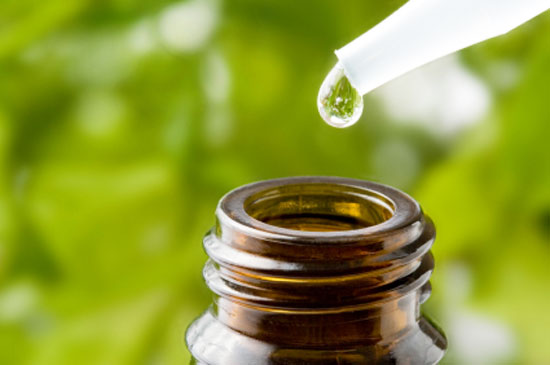Critique of Proposed Regulations of Homeopathic Medicines and Alternative Proposals (3)
Read the second part of the article
Priorities for FDA Enforcement

The FDA says it has no intention of outlawing homeopathic medicines but claims that it wants to reduce potential problems arising from them. The agency claims that it plans to develop “a new, risk-based enforcement approach to homeopathic drug products that have the greatest potential to cause risk to patients”. The FDA asserts that they wish to align “risk-based” assessments of all types of drugs, to protect the public.
If the FDA’s concerns about “risk assessment” are real, then the vast majority of homeopathic medicines will not undergo any new regulation that will make them unavailable to the general public, as the vast majority of homeopathic medicines are substantially safer than conventional drugs.
For example, it is illegal to jaywalk, and it is illegal to drive a car while drunk. If law enforcement chose to enforce jaywalking vigorously, it wouldn’t have the time or resources to enforce drunken driving. Obviously, there is much greater risk to have drunk drivers than jaywalkers.
That said, there can and must always be exceptions. At rare times, there may be jaywalkers who choose to take exceptional risks in traffic and who create potentially dangerous situations for others. It is obvious where the FDA needs to place its enforcement priorities. The FDA asserts that it intends to focus its new enforcement priorities on the following kinds of homeopathic products. It will be helpful, therefore, to review each of the categories individually:
– Products with reported safety concerns;
– Products that contain or claim to contain ingredients associated with potentially significant safety concerns;
– Products for routes of administration other than oral and topical;
– Products intended to be used for the prevention or treatment of serious and/or life-threatening diseases and conditions;
– Products for vulnerable populations;
– Products that do not meet standards of quality, strength or purity as required under the law.
Products with reported safety concerns
If a homeopathic medicine is reported to have safety concerns, it is reasonable for the FDA to investigate them. However, because some safety concerns are false, imaginary or the result of antagonists to homeopathy, the FDA should explore: 1) what the modern literature from toxicology suggests are and aren’t safe doses; and 2) whether similar safety concerns occur in other countries. For example, Hyland’s Homeopathic Teething Tablets were reported in the U.S. to potentially cause seizures in children. These same teething tablets were sold in Canada with no such reports.
Products that contain or claim to contain ingredients associated with potentially significant safety concerns
– An infectious agent with the potential to be pathogenic;
– A controlled substance, as defined in the Controlled Substances Act (21 U.S.C. 812);
– Multiple ingredients that, when used in combination, raise safety concerns due to possible interactions, synergistic effects or additive effects of the various ingredients; and,
– Ingredients that pose potential toxic effects, particularly when those ingredients are concentrated or in low dilution presentations (e.g., 1X, 2X or 1C) or are not adequately controlled in the manufacturing process.
Below are comments about safety concerns of homeopathic medicines in the above categories:
1. The FDA is claiming homeopathic medicines that contain ingredients of an infectious agent pose a safety risk. The FDA here is referring to what are called “homeopathic nosodes”, that is, homeopathic medicines made from bodily tissue or fluids that contain bacteria or viruses. Nosodes are generally available in high dilutions, where the dose is so small that it is not known to have toxicological or infectious effects.
Most nosodes in the U.S. are available only to homeopathic health and medical professionals, because most of the nosodes are intended for more complex health and medical conditions, for which an OTC (over the counter) drug is not indicated.
A small number of nosodes, however, are known to treat OTC conditions and to help reduce the severity and duration of common and relatively minor ailments. Therefore, it makes sense to maintain the present status of homeopathic nosodes as those remedies that are available only to certain licensed health and medical professionals as well as those who are certified or licensed to practice homeopathy.
In 2016, Hahnemann Laboratories provided testimony at an FTC hearing on homeopathic medicines. This testimony affirmed the safety of homeopathic medicines, asserting that “the FDA has never received an Adverse Event Report for a classical single remedy oral use homeopathic product with a ‘safe’ dilution level of 6C (one part per trillion) or more”.
2. The FDA already does not allow homeopathic medicines to be made from substances defined in the Controlled Substances Act. This includes those that have a high potential for abuse, have no currently accepted medical use for treatment in the U.S. or for which accepted safety protocols for use under medical supervision do not exist.
3. There is no evidence that multiple ingredients of the nanodoses used in homeopathic medicines have safety concerns. And because there is greater use and sale of multiple-ingredient homeopathic medicines than single-ingredient, one would expect more evidence of problems from such medicines, and this evidence simply doesn’t exist.
Unless the FDA can provide adequate evidence that a combination of ingredients in homeopathic doses pose actual danger, it should not prohibit the marketing or sale of homeopathic formula products, except in the marketing for conditions of serious ailments (which OTC drugs are not allowed to do anyway).
4. The homeopathic community has collaborated with the FDA and with scientists who specialize in toxicology to determine at what dose a plant, mineral, animal or biological medicine is no longer safe. The homeopathic community has no problem reducing access to doses that pose safety risks, but such restrictions must not be just theoretical. Toxicological science must verify such risks, not politics or economics. Present FDA regulations already incorporate this determination.
Products for routes of administration other than oral and topical

The vast majority of homeopathic medicines are oral and topical, though homeopathic eye drops (for acute eye conditions of an OTC nature) and nasal sprays (for acute nasal ailments, including the common cold or respiratory allergies) are occasionally employed. Historical usage supports both means of dispensing homeopathic medicines. In fact, Dr. Samuel Hahnemann, the founder of homeopathic medicine, sometimes encouraged patients to simply sniff an alcoholic solution of a homeopathic medicine.
In recent times, Zicam (a homeopathic medicine for symptoms of a common cold) uses a cotton swab-like device inserted into the nose. This application of a homeopathic medicine is new and does not have a record of historic usage. Because this means of application is not a time-tested method of administrating homeopathic medicines, it may be reasonable for the FDA to deem this type of dispensing a “new drug.”
Products intended to be used for the prevention or treatment of serious and/or life-threatening diseases and conditions
Homeopathic medicines sold to consumers are, by definition, over-the-counter drugs and, as such, should be marketed only for “over-the-counter ailments” – that is, ailments that do not require a medical diagnosis, are not life-threatening and are basically self-limiting.
To date, none of the leading established homeopathic manufacturers make or market OTC homeopathic medicines for “serious diseases” and, in fact, homeopathic manufacturers support the FDA in its efforts to crack down on individuals or companies that make or market homeopathic medicines for heart disease, cancer, diabetes or any other life-threatening disease.
Products for vulnerable populations
There is certain logic in reducing the availability of potentially dangerous drugs to vulnerable populations. However, due to homeopathy’s longtime impressive safety record, these medicines can be used by vulnerable populations. Pregnant and lactating women, infants and children are ideal populations for such usage. In fact, historically and internationally, these vulnerable populations have benefited from having access to homeopathic medicines due to the products’ high level of safety.
It is common for parents to use homeopathic medicines for their infants and children for minor health problems, and it is essential that parents maintain access to homeopathic medicines for such nonserious and non-life-threatening ailments. Parents experience much higher risks with virtually any conventional medication than with homeopathic ones.
Products that do not meet standards of quality, strength or purity as required under the law
Present FDA regulations allow for enforcement of standards of quality, strength and purity. However, modern technologies can measure exceedingly small variations in these factors. In a recent action on homeopathic teething tablets, the FDA found “variable amounts” of a listed ingredient, belladonna.
However, what the FDA did not report was that the variable amount was still in the safe range, with a vast margin of error. Therefore, it is prudent for the FDA to only consider enforcement of these standards when the public’s safety is seriously threatened.
Suggestions for Regulating Homeopathic Medicines
Intellectual Dishonesty and Questionable Ethics from Skeptics of Homeopathy
Pulitzer Prize–winning author Paul Starr, in his book The Social Transformation of American Medicine: The Rise of a Sovereign Profession and the Making of a Vast Industry, acknowledged that homeopathic medicine in the 19th century was a medical, scientific and economic threat to conventional medicine. Starr even asserted: “Because homeopathy was simultaneously philosophical and experimental, it seemed to many people to be more rather than less scientific than orthodox medicine”.
The American Medical Association (AMA) was founded in 1848, two years after the formation of the American Institute of Homeopathy. Starr notes that the AMA was founded, in part, to slow the growth of homeopathy. From 1860 to 1900, the AMA’s code of ethics prohibited AMA members from consulting or even socializing with medical doctors who practiced homeopathy.
This ethical code was one of the few that were ever enforced. An extreme example of this prejudice occurred on the night of Lincoln’s assassination. William Seward was one of Lincoln’s closest political advisers and an advocate for homeopathic medicine. On the night Lincoln was assassinated, Seward was stabbed in the multi-person assassination plot against the Union.
Thanks to the medical care provided by Dr. Joseph K. Barnes, U.S. Surgeon General, Seward survived. However, Seward’s personal physician was a homeopathic doctor, and due to the fact that the AMA had a policy that it was an ethical violation for conventional physicians to consult with a homeopathic doctor or even provide care for a homeopathic patient, Barnes was denounced by the AMA for providing medical care.
Read the fourth part of the article
yogaesoteric
January 30, 2019
Also available in:
 Română
Română
